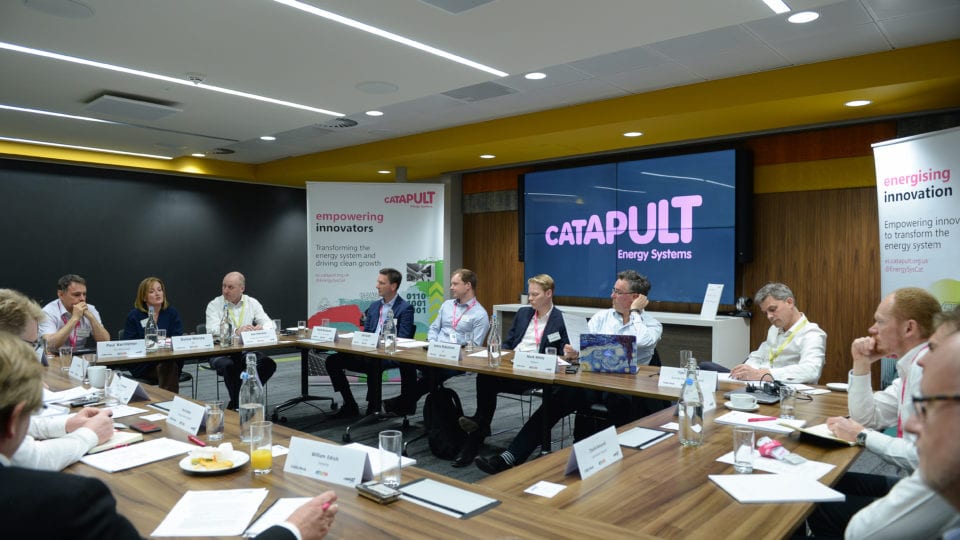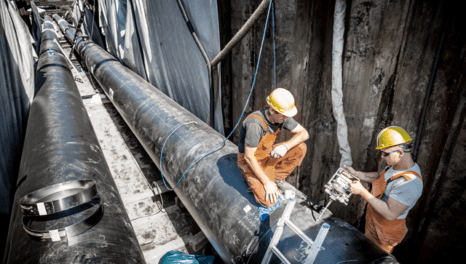Overcoming challenges faced by SMEs
The challenges facing small and medium size enterprises (SMEs) when it comes to engaging with energy networks are wide and varied. Alec Peachey reports on a roundtable debate hosted in association with the Energy Systems Catapult.
12th July 2019 by Networks

Getting access to the right decision maker can be a major challenge for any business. We’re amidst a hugely exciting energy revolution yet the challenge for SMEs is finding the appropriate innovation lead or champion within the larger influential organisations and working with them to help join up the dots and win some buy-in.
Attendees at a debate hosted by Network at the Catapult’s headquarters in Birmingham discussed what could be done to help SMEs get to the right person.
During the conversation it was noted that there’s a need for a deeper understanding of how networks make decisions.
One delegate commented: “When small businesses are trying to work with big businesses, a big business doesn’t have one person who makes the decision, there’s a whole network of people that make the decision.”
Improving the line of communication between SMEs and the networks is clearly a challenge but help is available through the ESC’s Innovator Support Platform (ISP) which is designed to provide support and information to SMEs.
The ISP has access to a broad network of existing incubators, accelerators and external support initiatives that are all designed to make things easier.
The audience debated the pros and cons of the incubator and accelerators in general and discussed how to make them more effective.
One member remarked: “There have been many studies that show them to be beneficial for the economic prosperity of any region. I think the ESC has found a key area in the market that was missing. It gives access to information, technology and systems thinking. From an SME perspective when you come into the energy landscape it’s quite difficult to know who’s who. A dummies guide that’s kept up to date on a website that brings all information together would be useful.”
There are also barriers to international expansion facing SMEs, with delegates noting that it is often difficult to find a partner who they can trust abroad.
One remarked: “The single biggest challenge we have when we get a sale overseas is that we don’t have a base or staff there. What we rely on is an in-country partner. You need someone on the ground locally. Finding that partner is difficult. Where the UK government has people overseas – what we’ve struggled to do is to engage them to help us find a local partner. We can do the export bit, but we need help finding someone who is trustworthy, can speak the language and who we can operate through. Finding a local partner is very difficult when you are half-way round the world.”
However, it was noted that UK SMEs do well where the overseas market has followed the UK model – for example in Australia and New Zealand.
The area of regulation was also covered and attendees heard that the challenge for innovators is the need to create a more open marketplace as networks are not fully incentivised to reduce operational cost but rather maximise asset base.
“In the energy world if you get it right and the product works, you’re then often facing the problem of regulation. It could be years before any value accumulates, if at all,” said one delegate.
With SMEs facing a myriad of challenges it’s clear that seeking out opportunities to help them will be vital in helping to deliver a once in a generation transformation of the energy system. The Energy Systems Catapult will continue to play an important role in enabling this.
View from the chair: Alec Peachey
SMEs are playing and will continue to play an important role in the energy system transformation.
But they’re facing frustrations and often must battle against laggards, corporate inertia and what often seems like needless bureaucracy. Although help is at hand through initiatives such as the Catapult’s Innovator Support Platform it’s clear that more can be done.
The risk otherwise is that many new products and services may never make it to market and the wider impact is that the industry could be missing out on some game changing technologies. One of the problems highlighted is that the investment gap seems to exist at the £500,000 to £1 million investment size – possibly because innovators are still too small at that stage and have not yet fully demonstrated their service/product. This means that they lack line of sight to future contracts. Ultimately investment is key, so this is one area that needs looking at.
At a time of unprecedented change in the energy sector it’s also important that SMEs continue to communicate. There can be a natural tendency for start-ups to become too focused on continual product development and technology readiness levels without engaging with the wider sector. They must continue to build a narrative and work collaboratively to tell the industry how they are seeking to improve things. This might make things easier when it comes to getting the right level of engagement with the networks.
Network will continue to feature regular interviews with SMEs to highlight the work they’re doing with networks and the types of technologies that are driving innovation forward as part of our supplier side section.
Comment
Paul Jordan, Innovator Support Platform business lead, Energy Systems Catapult.
A major part of the Energy Systems Catapult’s mission is to support innovators and ensure the UK benefits from these opportunities. A 2017 report by the Department of Business, Energy and Industrial Strategy showed that the UK already had 205 incubators and 163 accelerators, so when the Catapult was investigating how best to set-up our Innovator Support Platform (ISP), we wanted to ensure we would have impact and build on, rather than replicate, support already out there.
It was important that the ISP provided an offering that filled a need for the SMEs. From our research we noticed that, at a basic level, we could group SME innovators into three camps. In one camp, innovators are looking to provide new products or services within the current status quo of the energy system. Successful solutions may easily find a market, but they will have a challenge to be viable through the changing energy transition. The flip side to this are the SME innovators in the second camp, who are already developing solutions for tomorrow’s energy system – but with the challenge of viability in today’s market. Then there’s the third camp, consisting of those SMEs who can adapt their business model. They have a sustainable business today and can evolve as the energy system transitions – thereby having an eye on the bigger prize in the future market.
So, the ISP has developed an approach that differentiates it from other incubators/accelerators – to principally focus on the third camp. That’s not to say we can’t also try and help the other two, either by identifying future opportunities or finding ways to help tomorrow’s solutions adapt to today’s energy market.
For this transition group of innovators, we recognised the need to provide them with dual intervention. Their primary need as an SME is to have a sustainable business, with the right team, to bring in funding and ideally revenue, in order to establish themselves. But in a changing energy system, the creation of a stable foundation in which to innovate, often isn’t enough to ensure growth and scale. The secondary need or gap in support, becomes an ability to navigate the changing system; to create routes to market with the right business models and ultimately accelerate commercialisation by overcoming system barriers.
The ISP has been set-up with these two needs in mind. Bringing together a network of existing incubators, accelerators and external experts, alongside the Catapult’s unique capabilities, to help SMEs navigate the changing energy system. From consumer insights, business modelling and system integration expertise, to whole system modelling and our Living Lab of 100 smart consumer homes. At the same time, we can ensure innovators get the help they need from a more conventional business establishment perspective via our external support network. We are already seeing results too, with the six SMEs in the pilot phase moving forward well and the next cohort of SMEs in the ‘Smart Heating & Cooling’ space about to follow a similar journey.
For further information on the Innovator Support Platform, including details of sponsorship opportunities, please contact
Comments
Login on register to comment
Related content

Heat
Electric storage heating – a Cinderella solution
Why has electric storage heating been overlooked as we seek to tackle decarbonising domestic heat?

Heat
Prospects bright for landmark East London Heat Network
New Vattenfall-Cory partnership marks step towards record-breaking heat network capable of serving over 10,000 homes

Heat
New construction director at Switch2 Energy
Appointee brings experience from Vattenfall and Eon
Related supplier content

Heat
How E.ON. is helping the City of London become a zero emissions city
Discover Citigen. Deep in the heart of our bustling capital

Gas
Zero Harm supplement
'31.2 million working days were lost to work-related illness and workplace injury between 2016 and 2017' *(Health and Safety Executive)

Gas
Network explains heat networks
Commonplace in Europe and gaining in popularity here